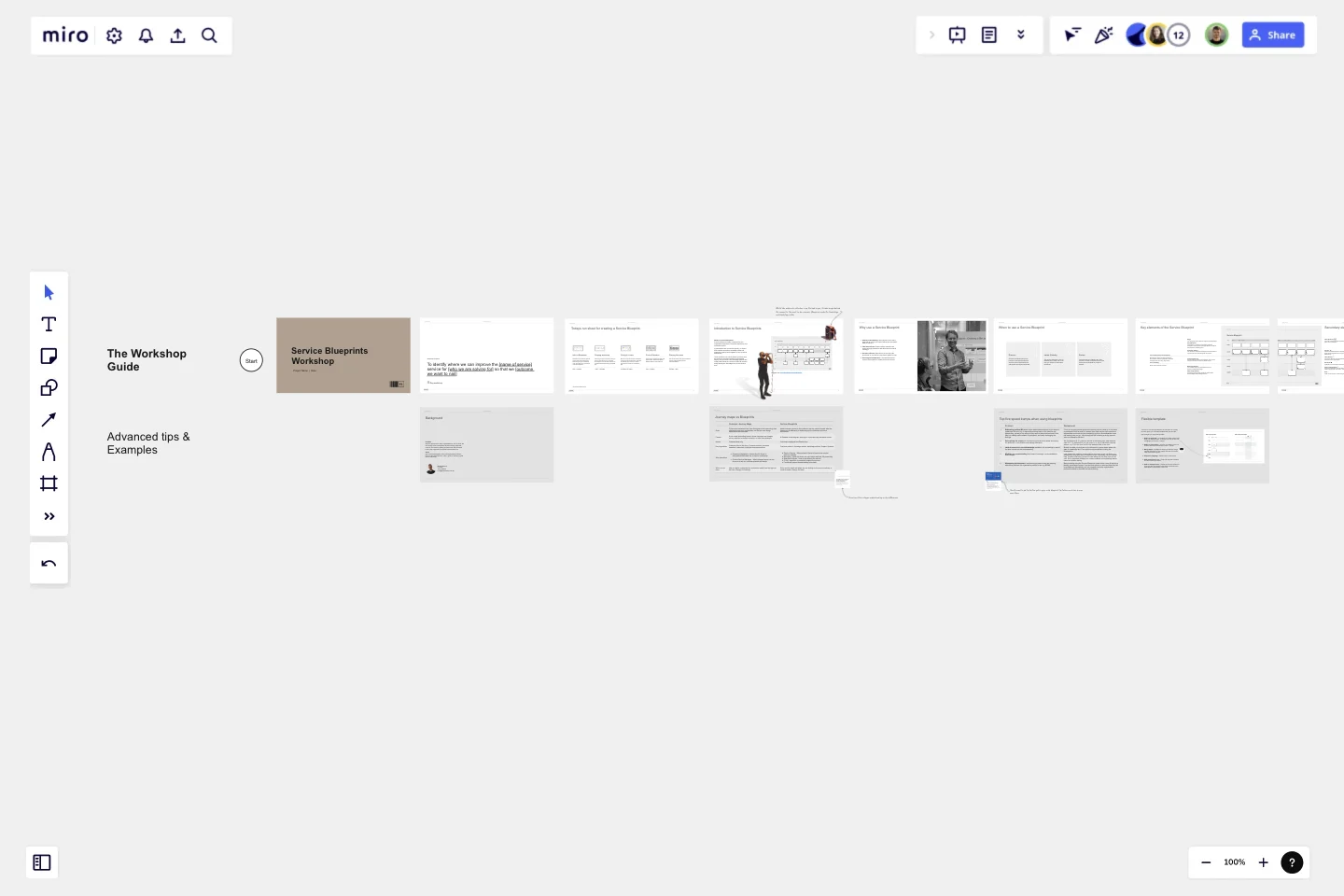Service Blueprint With AI
Welcome to our Service Blueprints Workshop template which is a step-by-step playbook for improving your service delivery by aligning what your employees and technology do to support the customer.
We have combined pragmatic real world tips with cutting edge AI to help you create better blueprints.
Includes
- Step-by step-guide- Drag and drop tools to speed things up- Real life examples - Free insider access to the Design Toolkit AI (Beta)- Links to articles that help you dive deeper- 100% editable templates
Why use it
Find the stuff ups: Pinpoint where customers are having a rough experience and drill down into what is causing it.
Get more efficient: Spot where you are doing the dumb stuff, or can fine tune a process, system or prop.
Amplify how you improve the service with the Design Toolkit AI which analyses your blueprints and automatically generates HMW statements and matching ideas.
When to Use it
When you are asked:
“What is going on with the service Larry? Fix it!.” Zoom in on root causes.
“Find me savings… yesterday!” - Nail efficiency savings, yet not stuff over the customer experience.
“Show me the future” - Communicate how teams and tech work together to deliver the future service.
Who Should Use it
This is a way to bring together frontline and supporting teams to get in sync faster.
This template was created by Matt Anderson.
Get started with this template right now.
Research Topic Brainstorm Template
Works best for:
Desk Research, Brainstorming, Ideation
Coming up with a topic for a research project can be a daunting task. Use the Research Topic Brainstorm template to take a general idea and transform it into something concrete. With the Research Topic Brainstorm template, you can compile a list of general ideas that interest you and then break them into component parts. You can then turn those parts into questions that might be the focus for a research project.
Empathy Mapping by Atlassian
Works best for:
Market Research, Research & Design
Atlassian Empathy Mapping is designed to help teams understand user perspectives. By mapping out user experiences, you can identify pain points and opportunities for improvement. This template is ideal for collaborative workshops and user research.
5 Whys Template
Works best for:
Design Thinking, Operations, Mapping
Ready to get to the root of the problem? There’s no simpler way to do it than the 5 Whys technique. You’ll start with a simple question: Why did the problem happen? Then you’ll keep asking, up to four more times, until the answer becomes clear and you can work toward a solution. And Miro’s features enhance the approach: You can ask team members questions in chat or @mention them in comments, and use color-coded sticky notes to call out issues that are central to the problem at hand.
Research Topic Brainstorm Template
Works best for:
Desk Research, Brainstorming, Ideation
Coming up with a topic for a research project can be a daunting task. Use the Research Topic Brainstorm template to take a general idea and transform it into something concrete. With the Research Topic Brainstorm template, you can compile a list of general ideas that interest you and then break them into component parts. You can then turn those parts into questions that might be the focus for a research project.
BPM
Works best for:
Diagramming
The BPM (Business Process Management) template is a visual tool for modeling, analyzing, and optimizing business processes. It provides a structured framework for documenting process flows, identifying bottlenecks, and improving efficiency. This template enables organizations to streamline operations, enhance productivity, and drive business performance. By promoting process transparency and agility, the BPM template empowers teams to achieve operational excellence and deliver value to stakeholders.
Empathy Map Template by Jeshua MacDonald
Works best for:
Market Research, Research & Design
The Empathy Map template is essential for anyone looking to understand their audience better. It helps you gather insights into user thoughts and behaviors, allowing you to design more user-centered products and services. Perfect for UX designers and marketers.
